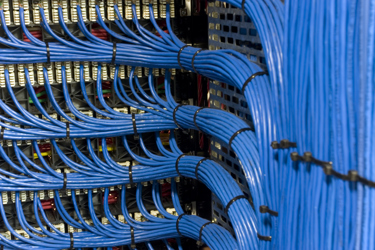Cables: Unsung And Overlooked Heroes

By John Oncea, Editor

RF cables are essential for transmitting signals between components with minimal loss and distortion. They function as the unsung heroes, maintaining signal integrity and optimizing overall system performance.
I did a Google search, asking what makes up an RF system. The Search Labs result reads, in part, “Radio frequency (RF) systems use a variety of components to transmit, receive, and process radio signals. These components include:
- Transmitter: Generates and modulates the RF signal that carries information, such as voice, video, or digital data.
- Receiver: Detects and demodulates the incoming RF signal to extract the original baseband data.
- Antenna: Part of the RF module, which also includes a printed circuit board, transmit or receive circuit, and serial interface.
- Signal processing units: Such as filters, amplifiers, mixers, and modems.
- Other components: Such as attenuators, switches, detectors, synthesizers, high-speed ADCs, and DACs.”
Which, great. But you know what’s missing? Cables.
There are several types of RF cables, including hand-formable, semi-rigid, and flexible cables, each suited for different applications. Selecting the appropriate type is critical, as using the wrong one can result in signal degradation, inaccurate measurements, and compromised system performance.
So, yes. Cables have long been an overlooked part of RF systems and now is the time to give them their due. Let’s take a look at this unsung hero: the simple but noble cable.
Cables 101
Cables serve as the vital link between components in a wireless system, transmitting signals from transmitters to antennas or from antennas to receivers. Proper cable handling and installation practices are crucial for maintaining signal integrity, including careful routing, avoiding twists and kinks, and using strain relief techniques. Key factors to consider when choosing RF cables include:
- Frequency range and cable attenuation
- Connector types and compatibility
- Shielding and environmental factors
- Impedance matching
- Flexibility and bend radius
- Temperature and chemical resistance
While they may seem like a simple wire, writes Times Microwave Systems, RF cables are sophisticated passive microwave components that can significantly impact system performance.
One of the primary concerns with RF cables is signal loss. Unlike audio cables that can operate over long distances with minimal issues, RF cables are much more susceptible to signal degradation. Three main factors affect signal loss in RF cables, writes Shure, are:
- Cable quality
- Transmission frequency
- Cable length
Higher quality cables, lower frequencies, and shorter cable runs all help minimize signal loss.
Shure adds that RF systems require precise impedance matching to function optimally. Most wireless systems use 50-ohm cables, which is different from the 75-ohm cables used in video applications. Using the wrong impedance can severely degrade signal strength.
RF cables in real-world applications often face harsh conditions, Times Microwave Systems notes. Factors like temperature extremes, vibration, chemical exposure, and physical stress can all impact cable performance over time. Selecting cables that can withstand the specific environmental challenges of your application is crucial.
Both average and peak power handling capabilities are important considerations for RF cables, especially in high-power applications like radar systems. Improper cable selection can lead to issues like corona formation or even destructive arcing between conductors, Times Microwave Systems writes.
To ensure your RF cables enhance rather than hinder system performance:
- Choose high-quality cables with appropriate shielding and dielectric materials for your frequency range.
- Keep cable runs as short as possible to minimize signal loss.
- Use active antennas or signal boosters to compensate for long cable runs when necessary.
- Consider the mechanical stresses cables face and choose designs that can withstand tensile, torque, and crush forces.
- Properly terminate cables with high-quality connectors, as poor connections are a common source of performance issues.
Avoid Catastrophic Failures
RF cables can represent a potential weak link in satellite systems, as they are mechanically and electrically exposed. Poor RF interconnect design has been linked to communication subsystem failures in some satellite missions.
In data centers, RF cabling plays a vital role in connectivity. When combined with effective cable management, it can significantly enhance performance, cooling, and maintenance efficiency.
While often overlooked, RF cables are critical in any wireless system. With thoughtful cable selection and implementation, engineers can significantly improve overall system performance, reliability, and longevity. Treating RF cables as the sophisticated microwave components they are, rather than simple wires, is key to optimizing RF setup.
